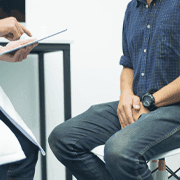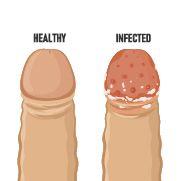10 Common Causes of Left Kidney Pain
In This Article
10 Common Causes of Left Kidney Pain
Parvathy
Updated on December 24, 2024
Medically verified by Dr. Arya
Fact checked by Dr. Fazeela

Urology
6 min read
Worried of what may be the reason for it?
In order to combat this issue , it is essential to understand the reason for it.
Through this blog, Mykare Health will guide you in exploring the 10 common causes of left kidney pain, symptoms associated with it, treatments, and when to see a physician.
1. Kidney Stones
Kidney stones are associated with pain in the left kidney. A person with kidney stones may experience sharp, intense pain in the back side that frequently radiates to the lower abdomen. Continuous vomiting also accompanies this condition in certain individuals.
Sometimes these stones have the ability to obstruct the urinary tract. This obstruction can lead to significant discomfort, as the body attempts to eliminate these deposits.
Hydration is essential; therefore, drinking ample amounts of water is crucial in aiding expulsion of smaller stones. However, medical intervention may be required in severe cases. This could include procedures like shock wave lithotripsy or surgical removal.
2. Urinary tract infection (UTIs)
UTIs ( Urinary Tract Infections ) can be caused when some bacteria gets laid into the urinary system. These infections can ascend to the kidneys, and if left untreated, will cause left sided kidney pain.
This condition typically includes persistent lower back or side pain (which can radiate anywhere from the back down the hips to down the legs), and frequent and painful urination with urine which can look cloudy or smell foul.
Treatment for UTIs generally involves the (prescription) of antibiotics by a healthcare provider. However, drinking cranberry juice or taking specific supplements may help; although, they are often considered adjunctive measures to prevent future infections.
3. Pyelonephritis
A more severe form of UTI is pyelonephritis, which includes back pain in the region around the left kidney. Fever and chills, pain during urination and lower back discomfort are symptoms associated with it,
Fatigue is one of the common symptoms and many people feel a general malaise. The treatment option differs person to person.Some cases require hospitalization .
Severe infection requires intravenous antibiotics. But in milder cases, oral antibiotics are the preferred treatment.
4. Polycystic Kidney Disease (PKD)
Polycystic Kidney Disease is a genetic disorder leading to fluid-filled cysts forming in the kidneys. This condition often results in pain on the left side.
Symptoms may manifest as dull, aching pain in the back or sides, alongside high blood pressure and occasionally presence of blood in the urine.
Management typically involves blood pressure regulation and regular monitoring of kidney function. In severe instances, surgical intervention or dialysis might be required.
5. Kidney Trauma
Kidney trauma means any injury to the kidney caused by some external force, and is divided into two types according to whether the object causing the injury breaks the skin or not.
The one sign most associated with kidney trauma is blood in urine. The symptoms of this condition include abdominal pain and swelling, severe back pain and fatigue. Your Kidney trauma treatment depends on its severity since it can be treated in different ways based on condition.
 6 min read
6 min readWhat is Stapler Circumcision - Everything You Need to Know
 8 min read
8 min readIs Circumcision Good or Bad - Here's How to Find Out
 8 min read
8 min readCircumcision - Scientific Guide to All Your Questions
Get a Callback Now
6. Kidney Cancer
When cells in your kidneys alter and grow out of control, there are chances for developing a condition called kidney cancer. It can usually result in intense kidney pain especially on the left side. For effective treatment early diagnosis is really significant.
Persistent pain in the flank region,Unexplained weight loss or fatigue,Blood in the urine are notable symptoms associated with this condition.Radiation or chemotherapy may be recommended in advanced stages.
7. Hydronephrosis
Sometimes When the kidney becomes swollen due to urine may not drain properly it may result in Hydronephrosis which often leads to pain in the left side.
Sudden or intense pain in your sides or your abdomen region, nausea and pain while urinating are major symptoms of this condition.
If your hydronephrosis is acute and a blockage is causing it, your healthcare provider may put in a nephrostomy tube through your skin into your kidney to help eliminate your urine.
And they might insert a flexible plastic tube, called a ureteral stent, to keep your ureters propped open, so that urine can flow normally.
8. Renal Vein Thrombosis
Renal Vein Thrombosis is a rare condition in which a blood clot forms in the vein that drains blood from the kidneys.
Renal Vein Thrombosismay present acutely with flank pain, hematuria, nausea, vomiting, fever and decreased urine output.
Treatment of Renal Vein Thrombosis generally consists of anticoagulants to dissolve the clot and prevent more clots, and may involve support of renal function or treatment of the underlying disorder. Certain patients may respond to thrombectomy or nephrectomy
9. Dehydration
Dehydration can lead to intense pain in one or both kidneys. Through sweating, vomiting, diarrhea, or excessive urine, there is loss of fluid content from the body. Conditions such as diabetes can also lead to dehydration.
Severe or chronic dehydration builds up wastes in your kidneys. Symptoms include: pain or discomfort in the side or back, tiredness or fatigue. food cravings etc.
Inorder to tackle this issue ensure that you stay hydrated always.The amount of water you need depends on age, climate, diet, and other factors. Also try to incorporate water-rich foods such as fresh fruit and vegetables.
Checking the color of your urine estimates whether you are hydrated. Dark yellow means you probably need more water.
10. Kidney bleeding
Hemorrhage is a serious cause of kidney pain. Bleeding inside the kidney can occur due to disease, injury, or a blow to the kidney area.
Major signs and symptoms include side and low back pain, stomach pain and swelling, blood in urine, nausea and vomiting
Using Pain relief strategies and bed rest help to heal minor kidney bleeding. Urgent treatment includes fluids to raise blood pressure. Surgery may be needed to stop a large kidney bleed.
Left Kidney Pain Treatment Options
Based on the underlying cause , the methods of treatment may also vary. Common approaches include consumption of medications such as Antibiotics for infections, pain relievers, or blood pressure drugs.
Through certain modifications in your lifestyle and by staying active and maintaining a kidney-friendly diet can keep this condition at bay. For certain cases surgery is the only option.
Left kidney pain is alarming, but knowing the possible reasons and getting adequate timely care can make it all better.
We often want to get to the root of the problem and identify what is causing intense pain in the left kidney, so we can receive the best treatment options.
If you have pain close to the left kidney, you should visit your medical provider to find what the problem is and start treatment.
Your kidneys are critical to your overall health so do your best to protect them today!
Source Links
Medical News Today
Cleveland Clinic



